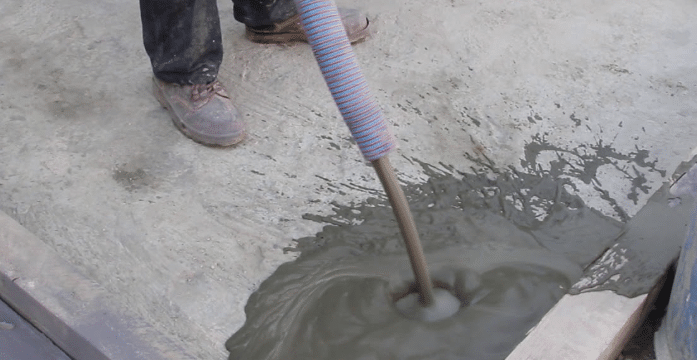What Are The Techniques For Foam-Fixing Concrete In Lakeside Ca?

- Before applying any type of foam, it’s important to clean and prep the area where you plan to work. This should include removing dirt and debris from the surface, as well as any old sealants or coatings that may be present.
- Foam-fixing can be done with a variety of tools, but it’s important to choose one which best suits your needs. Depending on the size and complexity of the repair job, a gun sprayer might be more appropriate than a brush or roller application.
- Always purchase quality materials when undertaking any kind of concrete repair job. Low-grade foams can be prone to cracking or delaminating, so it’s important to invest in the right materials for a better result.
- When mixing your foam solution, make sure to measure out all of the components accurately. Too little or too much of an ingredient can affect the effectiveness of your repair job.
- Be sure to wear safety glasses, gloves and protective clothing when applying foam-fixing solutions. This will help protect you from any potential hazards associated with the chemicals used in this process.
- Once applied, leave your foam-fixing mixture to dry for at least 24 hours before attempting to use the repaired surface. This gives enough time for it to fully cure and bond correctly.
- For long-term protection, apply a sealant over the repaired area once it’s dry. This will help protect against further damage and potential water seepage down the line.
FAQ’s
What Are The Methods Of Concrete Repair?
There are several methods of concrete repair which can be used, depending on the size and complexity of the job. These include foam-fixing, crack injection, slab jacking and patching with mortar or concrete.
How To Fix Sinking Concrete Steps?
Fixing sinking concrete steps requires a systematic approach to ensure their stability and safety. Inspect the extent of the sinking and determine if the steps are salvageable or require replacement. Minor sinking can often be repaired, while severe sinking may necessitate replacement. You will need a sledgehammer, chisel, pry bar, gravel or crushed stone, concrete mix, a wheelbarrow, trowel, and a level. Remove any loose or damaged concrete from the steps using the sledgehammer and chisel. Clean the area thoroughly to ensure proper adhesion. Dig a trench beneath the sunken steps and fill it with gravel or crushed stone. Compact the material to create a solid foundation. Prepare the concrete mix according to the manufacturer’s instructions in the wheelbarrow. Pour the concrete over the gravel-filled trench, ensuring it reaches the desired height. Use a trowel and level to smooth the surface and ensure the steps are even. Allow the concrete to cure according to the manufacturer’s recommendations. Once the concrete has fully cured, apply a concrete sealer to protect the surface and enhance its appearance.
What Is The Best Foam For Concrete Repair?
The best type of foam for concrete repair jobs is usually an expanding polyurethane foam. This type of foam has excellent adhesion properties and is designed to bond effectively with concrete surfaces. It’s also more resistant to temperature changes than other foams, making it ideal for outdoors applications.
Why Leveling Of Concrete Is Necessary?
Leveling of concrete is necessary for several reasons, primarily to ensure safety, functionality, and aesthetics. Uneven concrete surfaces can pose tripping hazards, especially in high-traffic areas. Leveling the concrete eliminates these uneven surfaces and reduces the risk of accidents and injuries. Uneven concrete slabs can indicate underlying issues such as soil settlement or improper installation. Leveling the concrete helps identify and address these problems, ensuring the stability and longevity of the structure. When concrete surfaces are not level, water can pool in certain areas, leading to water damage, erosion, and potential structural issues. Leveling the concrete allows for proper drainage, preventing water from accumulating and causing damage. Level concrete is essential for the functionality of various spaces. Uneven floors can affect the installation and stability of furniture, appliances, and equipment. Leveling the concrete creates a smooth and even surface, facilitating proper installation and use. Uneven concrete can be unsightly and diminish the overall appearance of an area. Leveling the concrete enhances the visual appeal of the space, whether it’s a residential driveway, patio, or commercial walkway. Overall, leveling of concrete is crucial for safety, structural integrity, functionality, proper drainage, and aesthetic appeal. It ensures a stable and even surface that can withstand regular use and environmental factors, providing a safe and pleasant environment for both residential and commercial purposes.
How Long Does Concrete Foam Take To Dry?
It depends on the size of the area being repaired and how thickly you’ve applied the foam. In general, it’s best to leave it for at least 24 hours before attempting to use the surface or applying a sealant.
Conclusion
It is important to take the time to properly prepare and execute a concrete foam-fixing job. By following these seven tips, you can ensure that the repair job is done correctly, helping prevent further damage and extending the life of your surfaces. For more information, contact Concrete Contractor Lakeside Ca at (619) 678-0052.